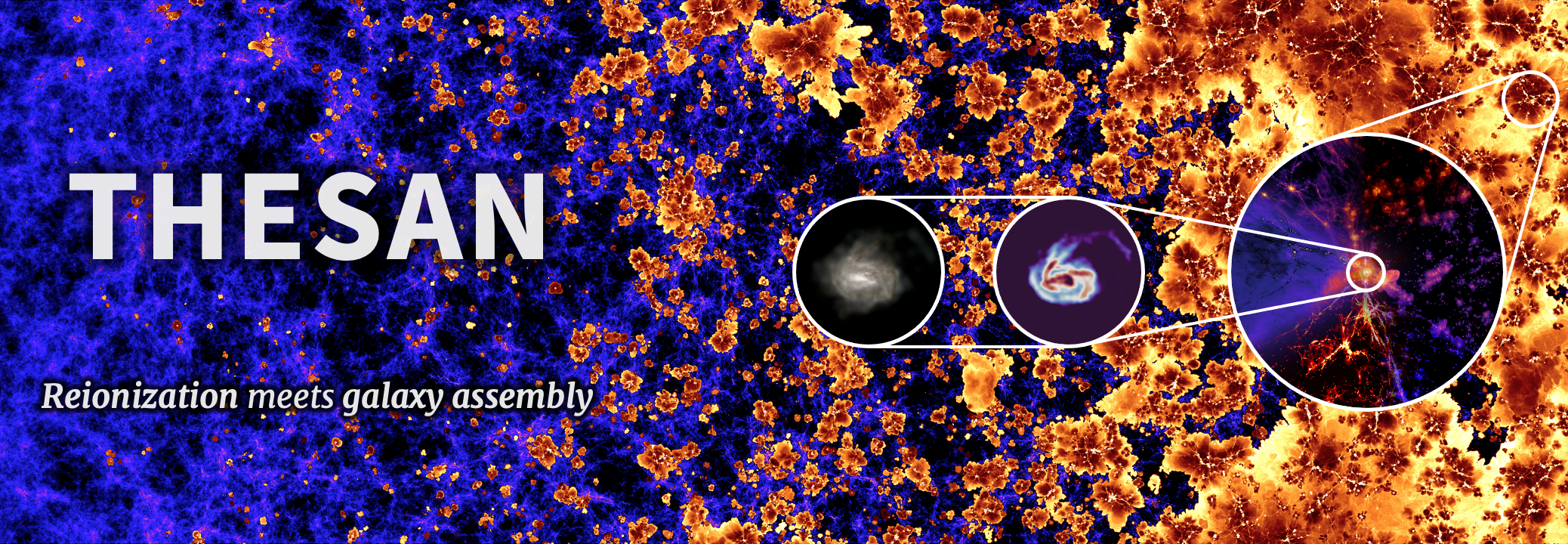The THESAN project is a suite of large-volume cosmological radiation-magneto-hydrodynamic simulations of the Epoch of Reionization. The name THESAN is a reference to the Etruscan goddess of the dawn, symbolic of the cosmic dawn in the early universe when hydrogen was reionized by the first stars and galaxies. The design strategy was tailored to enable unprecedented studies of both cosmic reionization and galaxy formation processes at the same time. This is achieved by combining the successful IllustrisTNG galaxy simulation framework with self-consistent radiation transport, non-equilibrium heating and cooling, realistic ionizing sources including binary stellar systems and active galactic nuclei, as well as a model for cosmic dust creation, evolution, and destruction. The simulations employ the state-of-the-art Arepo-RT moving mesh hydrodynamics code and were run on some of the largest supercomputers in the world. The suite consists of a high-resolution Flagship simulation with an optimal combination of physical fidelity and box size to resolve hundreds of thousands of galaxies in a patch of the universe over 300 million light years across. This is complemented by a number of medium-resolution runs investigating modifications in the physical model, which so far include studies of numerical convergence, source escape fraction dependence on the galaxy mass, and alternative dark matter models.
Recent News
- October 2021
- Thesan featured as MPA monthly highlight
- October 2021
- Press releases are coming soon.
- October 2021
- Three presentation papers are posted to the arXiv and the website is launched.
- July—September 2021
- Three presentation papers are submitted to MNRAS.
- March 2021
- Flagship simulation finished on SuperMUC-NG at the LRZ.

THESAN builds upon the tremendous efforts within the scientific community to understand how the universe works, with a particular emphasis on the first billion years after the Big Bang. In fact, for many researchers interested in the astrophysical and cosmological contexts of high-redshift galaxies, THESAN serves as an ideal reionization simulation counterpart for upcoming observational facilities. Most notably, this includes the James Webb Space Telescope (JWST) poised to fundamentally alter our understanding of the cosmos, but also a wide range of others targeting high-redshift science including 21 cm cosmology, e.g. the Hydrogen Epoch of Reionization Array (HERA) and Square Kilometre Array (SKA), and line intensity mapping experiments, e.g. the Cerro Chajnantor Atacama Telescope-prime (CCAT-prime) and Spectro-Photometer for the History of the Universe, Epoch of Reionization and Ices Explorer (SPHEREx). The primary science goals of THESAN are to investigate the connections between galaxies and the intergalactic medium throughout the Epoch of Reionization. The unique simulation approach invites progress and insights on a number of important open questions. For example:
The THESAN project was envisioned in 2019 and the simulations were completed in 2021. The project description page contains an introduction to the motivations, techniques, and early science results of the THESAN simulations. The people page introduces the collaboration, the movies and images pages provide general access to media content, the publications page lists scientific results, and the data page provides detailed information and public access to the full simulation data.
